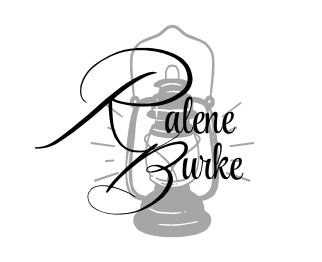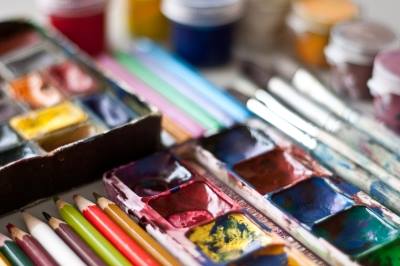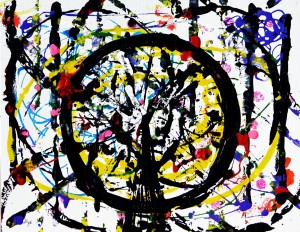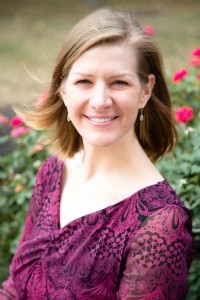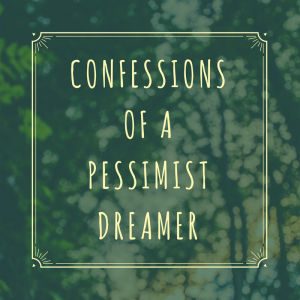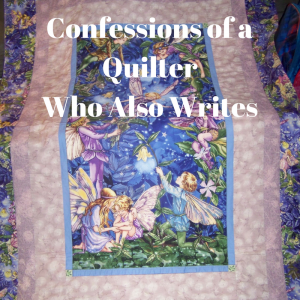
When you hit a creative block, maybe you read outside your genre to find new inspiration. Maybe you talk it out in your local writing group. But have you ever considered finding new inspiration, not only outside your genre and writing group, but from another set of artists altogether? Magic can happen when creative people from different branches of the fine arts come together.
Last fall, Karen, a local painter, sat down for coffee with me and a couple poets and painters. (We poets insist on meeting at the local coffee/tea shop. Caffeine makes us more productive.) As we chatted over cheap legal stimulants, she proposed a group collaboration.
We spread the word to our poet and painter friends, and, a few weeks later, about a dozen of us gathered for a brainstorming session. We each brought three poems or paintings to the session to share. Truthfully, we had no idea what we were doing, other than the consensus that “Wow, I had no idea there was such talent here in this other field. It’s really inspiring.”
Immediately, people started to connect with what they read and saw. For example, I saw a painting of Princess Di wearing a hat with a brim so large it looked like Saturn’s rings. I asked the artist’s permission to write an ekphrastic poem based on her work, in which I compared Di’s celebrity to outer space.
What is an ekphrastic poem?
An ekphrastic poem is a poem inspired by a work of art.
In our case, the artists also created art based on our poems. One of our most prolific artists was Alys Caviness-Gober. Here is a piece she painted for my poem Carnival World:
CARNIVAL WORLD
When the carnival left
the fairgrounds bore
the alien imprint
of crop circles in the grass.
The merry-go-round
left the round ghost
of the landing site
of a flying saucer.
Where are the inhabitants
of this fleeting world
that still smells of deep-fried adrenaline?
Where are the monuments they erected
of metal bars and canvas?
What means their last message:
the trampled echo of calliope music?
They flew away
through colorful stars
Ferris wheel galaxies
and left behind the litter of
a space, a time.
An ekphrastic piece need not be as literal as an illustration or description. You may imitate the mood the art evokes, or a specific segment of the art. For example, one poet looked at the way three cows in a pastoral scene were grouped and turned it into a statement about gossip.
There really are no other rules. Just inspiration!
Karen’s Poets and Painters group has met once a month since fall. I won’t say there haven’t been challenges in getting a large group of right-brained, strong-minded people to agree on an end goal. But there have also been some collaborations so moving they brought me to tears. For example, one painter (Sojna) depicted two abstract, red birds facing each other. One was right-side-up, one upside-down (think ying-yang). Vince, one of the poets, saw in it his son’s relationship to the world. His beloved son is on the autism spectrum and sees the world in a completely different way.
Eventually we also added a photographer and stained glass artist to the mix. The studio staff liked the idea of collaboration between different artists so much they hosted a whole exhibit in January, which featured pairings of visual art, written word, drama, and music.
No one in our group was limited as to style, number of poems, or number of collaborative partners. You could work with anyone as little or as much as you liked, as long as it was mutually agreeable. Just like in any partnership, sometimes you hit it off (artistically), sometimes you don’t. I began to think of our monthly meetings as Creative Speed Dating. Some poems and paintings were lovely but didn’t find a collaborative match. On the other hand, sometimes one painting triggered five poems. Occasionally someone sparked a chain reaction. A poet wrote a poem based on a painting, a second artist painted a new piece based on the new poem, and so on, like the childhood game of Telephone.
Do you have to write ekphrastic poetry in a big group? No. If you work with one artist, you get to know each other’s style intimately and can form a great friendship. After a while, you will find yourself writing a poem to bring out that artist’s specific talents.
If the artist you want to collaborate with is unreachable (or deceased), you can still use your piece as a writing exercise. When I enter my ekphrastic poems in contest or for publication, I only include images of the art if I have the artist’s permission or it is in the public domain. If you do not have permission, your poem may still be publishable without the art if it is transformative and a very different take on the original. I am not a lawyer, so read up on your copyright law before proceeding.
How did ekphrastic collaboration benefit me as a writer?
- Visual artists are very tuned to, well, the Trying to describe a particular shape and shade made me reach further to find more precise word images.
- I was particularly drawn to portraits. As a writer, I asked the eternal character and plot questions, “Why is she holding that umbrella? Why is her head turned away from his?” You may find a whole story in a work of art, or gain new insight into your WIP.
- A visual artist will find angles to your writing you never considered.
- The art may challenge you to try unfamiliar poetic forms which match the feel or shape of the visual work. A small nature scene may lend itself to a rictameter, or a painting with repeated patterns to a pantoum.
- Not a poet? Try writing ekphrastic flash fiction. You’ll gain many of the same benefits. Poetry helps me pare down the word count in my prose, and flash fiction would do the same.
- It can be as quick a process as you like. You find a painting you like, write your poem in a morning, and you’re done. When I was in the middle of putting my 160,000 word novel on a diet, I found it a relief to take a couple hours and just do a writing project from start to finish. Other short-term opportunities include exhibiting your collaboration in a temporary exhibition. A handful of our poet/painter pairings chose this route, which included a kickoff event with food and public readings. It was good exposure for us all.
- Writing, as we know, demands many hours of solitary work. It’s a relief to gather with other creators of fine art who can share our struggles and encourage us.
- Face it, we artists and writers love to hear the magical words, “Your work inspires me.”
How to Find Your Creative Speed Dating Match:
If you are a writer looking for an artist, go to art fairs and festivals. Not only can you see if the art inspires you before you approach the artist with your proposal to collaborate, you can often meet the artist in person. You can feel out whether you can work with this person, whether your business personalities jive, and get some background information about what inspires them. Also, they are most likely to agree to a collaboration if they see you in person instead of a random email. Pick a non-peak hour and bring your contact info. If the artist is not present (say, at a gallery) write down the name of the artist and google it later.
Dates gone wrong: Can you be wrong in your ekphrastic piece?
Yes and no. There is only one time an artist asked me to rewrite my ekphrastic poem. She painted an abstract piece of a snowy ground and red trees. I interpreted it as the transition of winter to spring, and she fall to winter. Generally, if you involve yourself in such a group, you should go into it accepting that your collaborative partner will take your work in new directions. That is both the benefit and the risk. Like dating, if the partnership doesn’t strike a spark, remember it was only one awkward first date. Learn from it (which was the whole point) and move on to other partners with whom you have creative chemistry. Most of all, have fun.
Sarah E. writes unruly fairs and poems. Her first novel, Waking Beauty, asks the question, “What if Sleeping Beauty refused to wake up?” She performs her short stories and poems for local libraries, organizations, and conferences.
